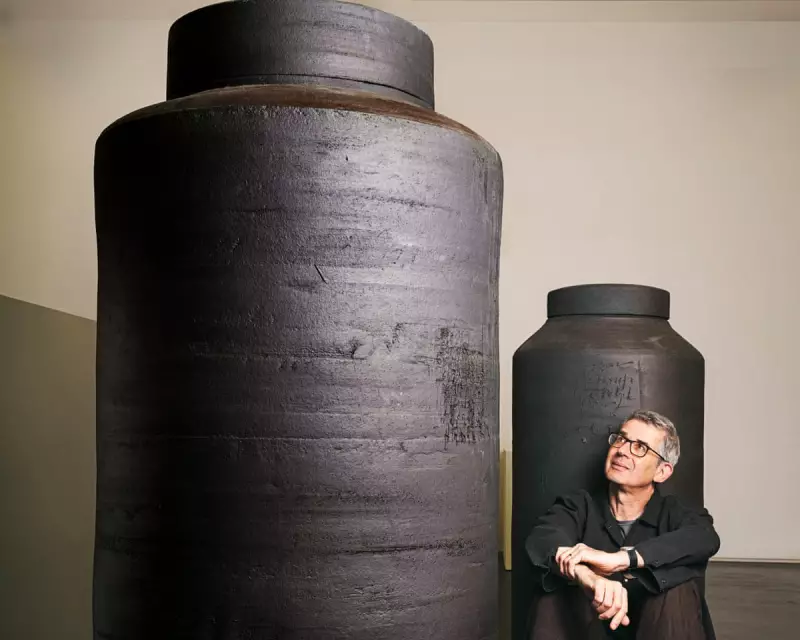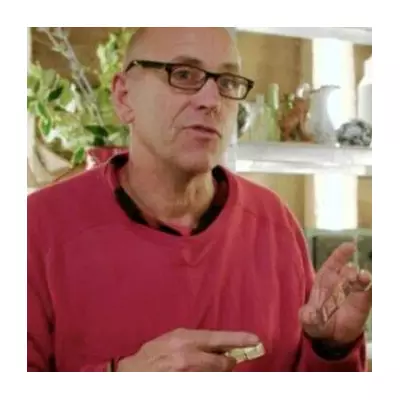
In a dramatic departure from his renowned minimalist vessels, celebrated British artist Edmund de Waal has unleashed what he describes as his 'demonic' side in a groundbreaking new exhibition. The acclaimed ceramicist, equally famous for his bestselling memoir 'The Hare with Amber Eyes', has created his most personal and intense body of work to date, now showing at London's prestigious Gagosian Gallery.
The Dark Inspiration Behind de Waal's Transformation
The exhibition, titled 'axelsalto', represents a profound artistic shift for de Waal, drawing direct inspiration from the radical Danish ceramicist Axel Salto (1889-1961). For years, de Waal has maintained what he calls a 'conversation' with Salto's work, particularly the older artist's 'Budding' stoneware from the 1940s that breaks from conventional ceramic forms with its almost organic, sprouting protrusions.
De Waal's fascination with Salto began decades ago when he first encountered the Danish artist's work at the Kunstindustrimuseet in Copenhagen while still a student. This encounter planted seeds that have now fully blossomed in his latest collection. The British artist describes feeling an immediate connection to what he perceived as the 'dark, strange, demonic' quality in Salto's creations, elements that stood in stark contrast to the more sanitised version of Scandinavian modernism typically celebrated.
The new works mark a significant departure from the serene, pale-toned porcelain vessels that established de Waal's international reputation. Instead, visitors to the Gagosian will encounter dramatically different pieces - dark, textured, and emotionally charged creations that seem to channel what de Waal identifies as the 'northern romantic tradition' of embracing darkness and complexity.
A Technical and Emotional Challenge
Creating these demonic ceramics required de Waal to completely reconsider his technical approach. The artist worked intensively for over a year in his London studio, experimenting with stoneware rather than his customary porcelain. This shift in material alone represents a significant transformation, as stoneware allows for rougher textures, darker colours, and more expressive forms than the refined porcelain for which he's known.
De Waal acknowledges the emotional challenge of creating these pieces, describing the process as 'allowing the demons out.' The works feature aggressive marks, deep scoring, and what the artist calls 'wounds' in the clay surface. These technical choices create pieces that feel alive, troubled, and radically different from anything he has produced before.
The exhibition includes approximately thirty new works, each representing a dialogue between de Waal's contemporary sensibility and Salto's mid-century radicalism. The pieces vary in scale from intimate objects to substantial installations, creating an immersive environment that challenges conventional expectations of ceramic art.
Critical Reception and Cultural Significance
Early responses to the exhibition have highlighted its courage and emotional depth. Critics have noted how de Waal has effectively broken from his established style to explore darker artistic territory. The show represents not just a change in aesthetic but a fundamental reconsideration of what ceramic art can express in the contemporary era.
The timing of this exhibition is particularly significant as it coincides with a renewed international interest in ceramic arts. De Waal's willingness to publicly transform his practice at this stage of his career demonstrates a remarkable artistic integrity and commitment to growth. The works deliberately reject commercial expectations in favour of personal and artistic authenticity.
Visitors familiar with de Waal's writing will find connections to themes explored in his books, particularly the examination of memory, inheritance, and the emotional weight of objects. The demonic ceramics serve as physical manifestations of these concerns, making tangible the darker currents that have always flowed beneath the surface of his more restrained works.
The exhibition continues at the Gagosian Gallery in London, offering British art lovers a rare opportunity to witness a major artist completely reinventing his practice. For de Waal, this represents not just a new body of work but a liberation from artistic expectations and a return to what he describes as the 'raw, strange power' that first drew him to ceramics decades ago.





